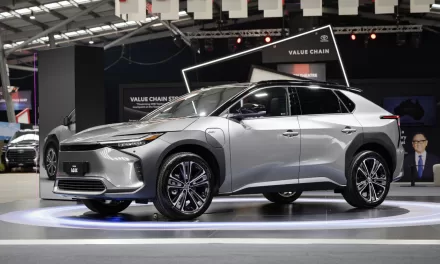Toyota bz4X Review
I’ve not come across a new Toyota vehicle in the last few years that I did not like. In fact, a few of them are some of my all-time modern favorites, namely the Sienna, 4Runner, Tacoma, as well as a few versions of the legendary Corolla. All this love I have for Toyota however could not sway me to favour the bZ4X.
Here’s more honest truth: In my entire 25-year career as an automotive journalist, I’ve recommended Toyota vehicles to everyone. The reason is simple: They’ve proven to predictably manufacture the most reliable vehicles in the industry for decades. And although there have been issues with some hybrid and PHEV models, aka #cablegate, I still recommend their purchase. I can’t recommend anyone get a bZ4X.
In last place
This harsh ranking applies to the dual-motor version specifically. For $44,990, the base FWD compares well with the likes of the Kia Soul EV and Niro EV, the Hyundai Kona EV, and the Nissan LEAF. It might be down on features, but it makes up for this with 406 km of range and more interior space.
Jumping into the XLE AWD, for $54,990, slaughter’s bZ4X’s momentum. At this price, it lands squarely in the Hyundai Ioniq 5, Kia EV6, and Volkswagen ID.4’s sights. The Nissan Ariya and Ford Mustang Mach-E are at least $5,000 more without offering anything over and above the latter three. And despite this and the bZ4X’s shortcomings, all of these vehicles sell.
The XLE AWD is motivated by a 72.8 kWh battery pack that, when charged fully, will deliver an estimated 367 km, or one of the lowest in the segment. Unfortunately, it doesn’t get any better. DC fast charging capacity is limited to 100 kW, not ideal for road trips, and its onboard charger is limited to 6.6 kW. In short, the Toyota bZ4X is one of the slowest-charging EVs on the market.
Two motors but not for the win…
But it’s got twin electric motors so at least it’s quick, right? Not exactly. The vehicle’s total system output is rated at 214 hp and 248 lb.-ft of torque. Let’s compare this to the Ioniq 5’s 320 hp and 446 torques… As such, the bZ4X’s 4,500-lb body requires 6.9 seconds to reach 100km/h. The reality is that this figure is not important but when cross-shopping, it won’t impress.
Thankfully, as with all EVs, the Toyota’s power is on tap immediately but quickly begins to taper off. This essentially summarizes the driving experience. Ride quality is decent if not a little less comfortable than I would like. Part of the blame goes to the 20-inch wheels and tires which, in turn, do nothing to improve handling. The Bridgestone tires squeal under minimal side loads saying that the chassis isn’t designed to tackle any type of spirited driving. Steering works.
Unlike some EVs, the 2023 Toyota bZ4X does not offer drive modes, other than ECO, nor can it 1-pedal drive. In its most aggressive setting, the Regenerative Braking Boost Mode, the SUV will still coast at about 7-8 km/h.
Styled, it is
Now, if you do opt for a FWD model, an L or LE, the bZ4X looks plain, so as not to say cheap… I remind myself that this is a matter of personal taste but be it white, silver, grey, or black, Toyota’s EV projects “inexpensive.”
The XLE, which opens up the possibility to two-tone paint schemes, with the optional and fitted Technology package, which includes the aforementioned 20-inch wheels, rear split spoiler, and roof rails, presents itself as a far more premium vehicle.
The cabin of the tested XLE Technology, priced at $62,750, includes a number of features including cooled front seats, full SofTex coverings, heated rear seats, a JBL audio system and more. The highlights are the extremely supportive and comfortable front perches and the 12.3-inch touchscreen display (from the LE FWD). There’s a fair amount of room for humans in both rows and the trunk is capacious at 784 litres.
The lower-lights are the 7-inch digital cluster which is just far enough from the steering wheel to be partially hidden, contrary to a typical cluster or a head-up display, too much reflection-prone glossy black plastic at the merger between the center stack and console, and the wireless charging bin which, if closed, will cook the average cellphone.
Because of demand
There are no alternatives, or rather, still far too few. The rule of thumb is lease your new EV for no longer than 48 month and hope for the best. The 2023 bZ4X got off on the wrong foot when it arrived late last year and though this may be a Toyota, I cannot recommend it be purchased. Moreover, I’d suggest one of the noted options in the segment, particularly a Hyundai or a Kia.
And finally, why bZ4X? Toyota has a number of names in its past-model bank that could have worked. Monikers like Cressida, Tercel, or Corona would have a nicer ring to it, especially alongside the Corolla and Camry.
The post 2023 Toyota bz4X Review: Starting Off on the Wrong Foot appeared first on Motor Illustrated.
Read More Toyota bz4X Review Motor Illustrated





